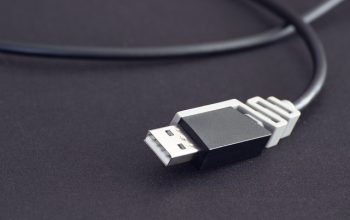Navigating the vehicle title transfer process can be a complex task, but recent updates to DMV title transfer laws in some states are streamlining procedures for car owners. With the advent of digital title transfers, the traditional paper-laden process is giving way to more efficient and less time-consuming methods. This shift not only promises to reduce wait times but also aims to minimize errors and simplify requirements. However, it’s important for buyers to stay informed about DMV title transfer fees and costs, as well as to complete all necessary forms accurately to ensure a smooth transition of vehicle ownership. For those embarking on an out-of-state title transfer, understanding the latest changes in DMV ownership transfer laws is essential for a hassle-free experience. This article will guide you through the new DMV title transfer requirements, break down the associated fees and costs, and provide step-by-step instructions on how to effectively transfer a car title post-purchase. Whether you’re an in-state or out-of-state buyer, these insights will help you navigate the updated vehicle title transfer process with confidence.
- Navigating the New Vehicle Title Transfer Process: Simplified Steps for State-Specific Updates
- Understanding DMV Title Transfer Requirements Post-Legal Revisions
- Breaking Down Title Transfer Fees and Costs: What to Expect When Transferring Car Ownership
- A Step-by-Step Guide to How to Transfer a Car Title After Purchasing a Vehicle
- Essential Considerations for Out-of-State Title Transfers in the Wake of Recent Law Changes
Navigating the New Vehicle Title Transfer Process: Simplified Steps for State-Specific Updates

The vehicle title transfer process has undergone significant enhancements in several states, with an emphasis on streamlining the procedure to make it more accessible and efficient for vehicle owners. With the advent of digital title transfers, car owners can now complete the process without the traditional deluge of paperwork, saving both time and effort. The DMV title transfer requirements vary by state but generally include a completed application form, proof of ownership, a valid photo ID, and payment for any applicable title transfer fees and costs. These fees typically encompass state taxes, titling fees, and registration fees, which can differ based on the vehicle type and location. It’s imperative for individuals engaging in an out-of-state title transfer to stay informed about their specific state’s regulations as they can significantly differ from one jurisdiction to another. For those wondering “How to transfer a car title” post-purchase, it’s essential to consult the DMV’s official guidelines or contact them directly for the most accurate and up-to-date information. This proactive approach ensures compliance with all legalities and avoids potential delays or penalties in the title transfer process.
Understanding DMV Title Transfer Requirements Post-Legal Revisions

Navigating the vehicle title transfer process post-legal revisions requires attentiveness to updated DMV title transfer requirements. Recent changes have streamlined procedures, with an emphasis on digital transformations that facilitate a more efficient experience for vehicle owners. Prospective transferees should familiarize themselves with the new protocols, which may include electronic submission of necessary documentation and payment of title transfer fees and costs. These updated measures aim to reduce the time and paperwork typically associated with the DMV title transfer requirements. It is imperative for individuals engaging in an out-of-state title transfer to stay informed about these changes, as they can significantly impact the transaction’s smooth execution. By understanding the revised guidelines and preparing all mandatory forms correctly, car owners can ensure a hassle-free transition of vehicle ownership. For anyone looking to initiate a DMV title transfer after car purchase, particularly across state lines, proactive research and adherence to the latest regulations are key to successfully completing the process.
Breaking Down Title Transfer Fees and Costs: What to Expect When Transferring Car Ownership

The vehicle title transfer process varies by state but is an essential step when transferring car ownership. Prospective owners must navigate the DMV title transfer requirements, which include submitting necessary documentation and fulfilling any associated title transfer fees and costs. These can encompass a range of expenses such as title transfer taxes, processing fees, and registration fees. It’s important for buyers to be well-informed about these costs prior to the transaction to avoid any surprises. The amount one must pay is subject to state regulations and can differ based on factors like the vehicle’s value, age, and type. To initiate the title transfer after car purchase, individuals typically need to complete a formal application—often referred to as a bill of sale or title transfer form—and present proof of ownership, such as the previous title, along with valid identification. Additionally, proof of insurance and emissions tests may also be required. By understanding these DMV title transfer requirements and associated fees, car owners can streamline the process and ensure a seamless transition of vehicle ownership. For those engaging in an out-of-state title transfer, it’s imperative to familiarize oneself with the specific laws and regulations that apply to your situation, as they may differ significantly from one’s previous state of residence. This due diligence will aid in a smoother transition and help in timely completion of the title transfer process.
A Step-by-Step Guide to How to Transfer a Car Title After Purchasing a Vehicle

When purchasing a vehicle from a private seller or a dealership, initiating the vehicle title transfer process is a critical step to establish legal ownership. Begin by notifying the DMV of your new vehicle acquisition within the prescribed timeframe as required by your state. This typically involves submitting a completed application form for a title transfer, which can often be found online on your state’s DMV website. Ensure that all personal and vehicle details are accurate to avoid delays.
Next, gather the necessary documentation, which commonly includes the current title (if available), proof of vehicle sale (such as a bill of sale), your driver’s license or state-issued ID, and any applicable title transfer fees and costs. The fee structure can vary by state, so it’s important to be aware of these beforehand to avoid any surprises. If the vehicle is new to the state, additional documentation like an emissions inspection or a VIN inspection report may also be required. Submit the application along with the documents and fees to your local DMV office or through the online process if available. Processing times can differ; some states offer expedited services for an additional fee. Once the transfer is complete, you will receive the updated title in your name, signifying the successful completion of the vehicle title transfer process and marking you as the official owner of the vehicle. Remember to keep your title in a safe place and update your insurance policy with the new ownership details. By following these steps and being well-informed about the DMV title transfer requirements, the transition from previous owner to new owner will be smooth and compliant with state laws.
Essential Considerations for Out-of-State Title Transfers in the Wake of Recent Law Changes

When navigating the vehicle title transfer process following an out-of-state car purchase, it is imperative to stay abreast of recent DMV title transfer requirements. As some states have streamlined their procedures to facilitate digital title transfers, this shift necessitates a thorough understanding of the new protocols. Prospective vehicle owners must familiarize themselves with the specific DMV title transfer requirements in the state where the car is now registered. This includes comprehending the Title transfer fees and costs associated with the process, as these can vary significantly from state to state. The costs encompass any applicable taxes, registration fees, and potential handling charges for processing the title transfer after car purchase.
To effectively transfer a car title in an out-of-state scenario post-purchase, one must carefully review all documentation required by the DMV. This typically involves completing the necessary forms with accuracy, providing proof of ownership, and submitting identification and residency documents if required. Additionally, individuals should be prepared to present evidence of the vehicle’s sale and transfer of title from the previous state. By staying informed about these changes and adhering to the updated DMV title transfer requirements, the process can be expedited, reducing potential delays and ensuring a hassle-free transition for out-of-state title transfers. It is advisable to check with the DMV of the new state for the most current regulations and to initiate the title transfer as soon as possible after the car purchase to avoid any complications or delays in obtaining valid registration documentation.
Navigating the vehicle title transfer process has become more streamlined due to recent updates in DMV title transfer requirements across various states. With the advent of digital title transfers, car owners can now complete this task with less time investment and fewer paper-based hassles. It’s imperative for buyers to stay informed about the applicable title transfer fees and costs associated with their transaction, as well as the specific forms required for accurate completion. For those conducting an out-of-state title transfer, especially after a recent change in laws, adhering to the updated guidelines will ensure a smoother process. By familiarizing oneself with these changes and utilizing the resources provided in this article, such as the step-by-step guide for transferring a car title post-purchase, individuals can confidently handle their DMV interactions and maintain compliance with state regulations.



